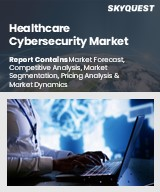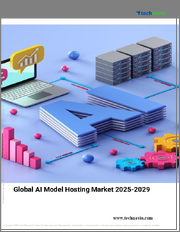
|
시장보고서
상품코드
1792266
클라우드 보안 소프트웨어 시장 보고서 : 유형별, 전개별, 최종 사용자별, 업계별, 지역별(2025-2033년)Cloud Security Software Market Report by Type, Deployment, End-User, Vertical, and Region 2025-2033 |
||||||
세계의 클라우드 보안 소프트웨어 시장 규모는 2024년 321억 달러에 달했습니다. IMARC Group은 시장이 2033년까지 472억 달러에 이를 전망이며, 2025-2033년 4.15%의 성장률(CAGR)로 성장할 것으로 예측했습니다.
클라우드 컴퓨팅 보안 소프트웨어라고도 알려진 클라우드 보안 소프트웨어는 클라우드 기반 시스템, 데이터 및 인프라를 보호하기 위해 특정 작업을 수행하는 데 사용됩니다. 오늘날 기업은 데이터, 애플리케이션 및 네트워크의 대부분을 클라우드 서버로 전송하고 있으며, 이들은 고도로 분산되어 동적이며 무단 액세스, 데이터 노출, 사이버 공격 및 기타 위협의 영향을 받기 쉽습니다. 클라우드 보안 소프트웨어는 사용자 프라이버시 보호, 규정 준수 지원, 개별 사용자 및 기기에 대한 인증 규칙 설정 등 네트워크 인프라에 여러 수준의 제어를 제공합니다. 그 결과, 전용 하드웨어에 대한 투자가 불필요해지고 관리상의 오버헤드가 줄어들기 때문에 정부 기관 및 민간 기업 모두 클라우드 스토리지와 보안 소프트웨어를 활용하고 있습니다.
사이버 공격과 침해가 자주 발생하는 동안 정보 및 데이터 보안에 대한 우려가 커지고 있습니다. 또한 조직이 클라우드 기반 서비스에 운영 및 데이터 관리를 의존하기 때문에 다양한 수준에서 리소스 무결성과 연속성을 보호하기 위해 클라우드 보안 소프트웨어의 채택이 증가하고 있습니다. 이 외에도 인공지능과 머신러닝을 이용한 혁신적인 기술 솔루션의 지속적인 개발로 안전 소프트웨어의 기능이 크게 향상되었습니다. 조직의 애플리케이션 및 네트워크 보안을 관리하기 위해 SaaS(Software as a Service), PaaS(Platform as a Service), IaaS(Infrastructure as a Service), 프라이빗 클라우드 등 다양한 서비스가 시장 기업에 의해 도입되었습니다. 예를 들어, IBM Cloud는 네트워크 위협으로부터 워크로드를 보호하기 위해 네트워크 세분화 및 네트워크 보안 서비스의 핵심 세트를 제공합니다. 또한 다양한 연구자들이 기존 소프트웨어 테스트와는 다른 여러 기능을 갖춘 다양한 신기술과 혁신적인 서비스 모델을 사용하여 클라우드 컴퓨팅 패러다임에서 Testing as a Service(TaaS)로서의 소프트웨어 테스트에 주목하고 있습니다.
IMARC Group의 최신 보고서는 세계의 클라우드 보안 소프트웨어 시장에 대한 모든 중요한 측면을 다루는 깊은 인사이트를 제공합니다. 그 내용은 시장의 거시적인 개요에서 업계 실적의 미세한 세부사항, 최근 동향, 주요 시장 성장 촉진요인 및 과제, SWOT 분석, Porter's Five Forces 분석, 밸류체인 분석 등 다양합니다. 이 보고서는 기업이, 투자자, 연구자, 컨설턴트, 비즈니스 전략가 및 어떤 형태로 클라우드 보안 소프트웨어 시장에 진입하거나 진입을 계획하는 모든 사람들에게 필수적인 보고서입니다.
이 보고서에서 다루는 주요 질문
- 클라우드 보안 소프트웨어 시장 규모는?
- 클라우드 보안 소프트웨어 시장의 장래 전망은?
- 클라우드 보안 소프트웨어 시장을 견인하는 주요 요인은?
- 세계 클라우드 보안 소프트웨어 시장의 주요 기업은?
목차
제1장 서문
제2장 조사 범위 및 조사 방법
- 조사의 목적
- 이해관계자
- 데이터 소스
- 1차 정보
- 2차 정보
- 시장 추정
- 상향식 접근
- 하향식 접근
- 조사 방법
제3장 주요 요약
제4장 서문
- 개요
- 주요 업계 동향
제5장 세계의 클라우드 보안 소프트웨어 시장
- 시장 개요
- 시장 실적
- COVID-19의 영향
- 시장 내역 : 유형별
- 시장 내역 : 전개별
- 시장 내역 : 최종 사용자별
- 시장 내역 : 업계별
- 시장 내역 : 지역별
- 시장 예측
제6장 시장 내역 : 유형별
- 클라우드 ID 및 액세스 관리
- 데이터 유출 방지
- 메일 및 웹 보안
- 클라우드 데이터베이스 보안
- 네트워크 보안
- 클라우드 암호화
제7장 시장 내역 : 전개별
- 퍼블릭
- 프라이빗
- 하이브리드
제8장 시장 내역 : 최종 사용자별
- 중소기업
- 대기업
- 클라우드 서비스 제공업체
- 정부기관
- 기타 및 타사 공급업체
제9장 시장 내역 : 업계별
- 헬스케어
- 은행, 금융서비스 및 보험(BFSI)
- 정보기술(IT) 및 통신
- 정부 기관
- 소매
- 기타
제10장 시장 내역 : 지역별
- 북미
- 유럽
- 아시아태평양
- 중동 및 아프리카
- 라틴아메리카
제11장 SWOT 분석
- 개요
- 강점
- 약점
- 기회
- 위협
제12장 밸류체인 분석
제13장 Porter's Five Forces 분석
- 개요
- 구매자의 협상력
- 공급기업의 협상력
- 경쟁도
- 신규 참가업체의 위협
- 대체품의 위협
제14장 가격 분석
제15장 경쟁 구도
- 시장 구조
- 주요 기업
- 주요 기업 프로파일
- Broadcom, Inc.
- Trend Micro Incorporated
- IBM Corporation
- Cisco Systems, Inc.
- RSA Security LLC
- McAfee, LLC
- Microsoft Corporation
- Dell Technologies, Inc.
- Hewlett Packard Enterprise Company
- BMC Software, Inc.
- Bitium
- CipherCloud, Inc.
- CloudPassage Inc.
- Check Point Software Technologies Ltd
- Fortinet, Inc.
- VMware, Inc.
- Sophos Limited
- Gemalto NV
- Imperva, Inc.
The global cloud security software market size reached USD 32.1 Billion in 2024. Looking forward, IMARC Group expects the market to reach USD 47.2 Billion by 2033, exhibiting a growth rate (CAGR) of 4.15% during 2025-2033.
Cloud security software, also known as cloud computing security software, is employed for executing specific tasks to protect the cloud-based system, data and infrastructure. Companies nowadays transfer most of their data, applications and networks on cloud servers, which are highly distributed, dynamic and more susceptible to unauthorized access, data exposure, cyberattacks and other threats. Cloud security software provides multiple levels of control in network infrastructure to protect the privacy of the users, support regulatory compliance and establish authentication rules for individual users and devices. As a result, both government and private organizations utilize cloud storage and security software as they eliminate the need to invest in dedicated hardware and reduce administrative overheads.
Frequent cyberattacks and breaches have led to an increase in concerns regarding the security of information and data. Additionally, due to the dependence of organizations on cloud-based services for operations and data management, there has been a rise in the adoption of cloud security software to safeguard the integrity and continuity of resources at different levels. Apart from this, with the continuous development of innovative technology solutions using artificial intelligence and machine learning, the functionality of safety software has improved significantly. Different services such as Software as a Service (SaaS), Platform as a Service (PaaS), Infrastructure as a Service (IaaS) and private cloud have been introduced by market players for managing the security of applications and networks of an organization. For instance, IBM Cloud provides a core set of network segmentation and network security services to protect workloads from network threats. Moreover, various researchers are focusing on software testing as 'Testing as a Service' (TaaS) in cloud computing paradigm using a variety of new technologies and innovative service models with multiple features that are different from traditional software testing.
IMARC Group's latest report provides a deep insight into the global cloud security software market covering all its essential aspects. This ranges from macro overview of the market to micro details of the industry performance, recent trends, key market drivers and challenges, SWOT analysis, Porter's five forces analysis, value chain analysis, etc. This report is a must-read for entrepreneurs, investors, researchers, consultants, business strategists, and all those who have any kind of stake or are planning to foray into the cloud security software market in any manner.
Key Market Segmentation:
Breakup by Type:
- Cloud Identity and Access Management
- Data Loss Prevention
- Email and Web Security
- Cloud Database Security
- Network Security
- Cloud Encryption
Breakup by Deployment:
- Public
- Private
- Hybrid
Breakup by End-User:
- Small and Midsize Business (SMBs)
- Large Enterprises
- Cloud Service Providers
- Government Agencies
- Others/Third Party Vendors
Breakup by Vertical:
- Healthcare
- Banking, Financial Services and Insurance (BFSI)
- Information Technology (IT) & Telecom
- Government Agencies
- Retail
- Others
Breakup by Region:
- North America
- Europe
- Asia Pacific
- Middle East and Africa
- Latin America
Competitive Landscape:
The report has also analysed the competitive landscape of the market with some of the key players being Broadcom, Inc., Trend Micro Incorporated, IBM Corporation, Cisco Systems, Inc., RSA Security LLC, McAfee, LLC, Microsoft Corporation, Dell Technologies, Inc., Hewlett Packard Enterprise Company, BMC Software, Inc., Bitium, CipherCloud, Inc., CloudPassage Inc., Check Point Software Technologies Ltd, Fortinet, Inc., VMware, Inc., Sophos Limited, Gemalto NV, and Imperva, Inc., etc.
Key Questions Answered in This Report
- 1.How big is the cloud security software market?
- 2.What is the future outlook of cloud security software market?
- 3.What are the key factors driving the cloud security software market?
- 4.Which are the leading companies in the global cloud security software market?
Table of Contents
1 Preface
2 Scope and Methodology
- 2.1 Objectives of the Study
- 2.2 Stakeholders
- 2.3 Data Sources
- 2.3.1 Primary Sources
- 2.3.2 Secondary Sources
- 2.4 Market Estimation
- 2.4.1 Bottom-Up Approach
- 2.4.2 Top-Down Approach
- 2.5 Forecasting Methodology
3 Executive Summary
4 Introduction
- 4.1 Overview
- 4.2 Key Industry Trends
5 Global Cloud Security Software Market
- 5.1 Market Overview
- 5.2 Market Performance
- 5.3 Impact of COVID-19
- 5.4 Market Breakup by Type
- 5.5 Market Breakup by Deployment
- 5.6 Market Breakup by End-User
- 5.7 Market Breakup by Vertical
- 5.8 Market Breakup by Region
- 5.9 Market Forecast
6 Market Breakup by Type
- 6.1 Cloud Identity and Access Management
- 6.1.1 Market Trends
- 6.1.2 Market Forecast
- 6.2 Data Loss Prevention
- 6.2.1 Market Trends
- 6.2.2 Market Forecast
- 6.3 Email and Web Security
- 6.3.1 Market Trends
- 6.3.2 Market Forecast
- 6.4 Cloud Database Security
- 6.4.1 Market Trends
- 6.4.2 Market Forecast
- 6.5 Network Security
- 6.5.1 Market Trends
- 6.5.2 Market Forecast
- 6.6 Cloud Encryption
- 6.6.1 Market Trends
- 6.6.2 Market Forecast
7 Market Breakup by Deployment
- 7.1 Public
- 7.1.1 Market Trends
- 7.1.2 Market Forecast
- 7.2 Private
- 7.2.1 Market Trends
- 7.2.2 Market Forecast
- 7.3 Hybrid
- 7.3.1 Market Trends
- 7.3.2 Market Forecast
8 Market Breakup by End-User
- 8.1 Small and Midsize Business (SMBs)
- 8.1.1 Market Trends
- 8.1.2 Market Forecast
- 8.2 Large Enterprises
- 8.2.1 Market Trends
- 8.2.2 Market Forecast
- 8.3 Cloud Service Providers
- 8.3.1 Market Trends
- 8.3.2 Market Forecast
- 8.4 Government Agencies
- 8.4.1 Market Trends
- 8.4.2 Market Forecast
- 8.5 Others/Third Party Vendors
- 8.5.1 Market Trends
- 8.5.2 Market Forecast
9 Market Breakup by Vertical
- 9.1 Healthcare
- 9.1.1 Market Trends
- 9.1.2 Market Forecast
- 9.2 Banking, Financial Services and Insurance (BFSI)
- 9.2.1 Market Trends
- 9.2.2 Market Forecast
- 9.3 Information Technology (IT) & Telecom
- 9.3.1 Market Trends
- 9.3.2 Market Forecast
- 9.4 Government Agencies
- 9.4.1 Market Trends
- 9.4.2 Market Forecast
- 9.5 Retail
- 9.5.1 Market Trends
- 9.5.2 Market Forecast
- 9.6 Others
- 9.6.1 Market Trends
- 9.6.2 Market Forecast
10 Market Breakup by Region
- 10.1 North America
- 10.1.1 Market Trends
- 10.1.2 Market Forecast
- 10.2 Europe
- 10.2.1 Market Trends
- 10.2.2 Market Forecast
- 10.3 Asia Pacific
- 10.3.1 Market Trends
- 10.3.2 Market Forecast
- 10.4 Middle East and Africa
- 10.4.1 Market Trends
- 10.4.2 Market Forecast
- 10.5 Latin America
- 10.5.1 Market Trends
- 10.5.2 Market Forecast
11 SWOT Analysis
- 11.1 Overview
- 11.2 Strengths
- 11.3 Weaknesses
- 11.4 Opportunities
- 11.5 Threats
12 Value Chain Analysis
13 Porters Five Forces Analysis
- 13.1 Overview
- 13.2 Bargaining Power of Buyers
- 13.3 Bargaining Power of Suppliers
- 13.4 Degree of Competition
- 13.5 Threat of New Entrants
- 13.6 Threat of Substitutes
14 Price Analysis
15 Competitive Landscape
- 15.1 Market Structure
- 15.2 Key Players
- 15.3 Profiles of Key Players
- 15.3.1 Broadcom, Inc.
- 15.3.2 Trend Micro Incorporated
- 15.3.3 IBM Corporation
- 15.3.4 Cisco Systems, Inc.
- 15.3.5 RSA Security LLC
- 15.3.6 McAfee, LLC
- 15.3.7 Microsoft Corporation
- 15.3.8 Dell Technologies, Inc.
- 15.3.9 Hewlett Packard Enterprise Company
- 15.3.10 BMC Software, Inc.
- 15.3.11 Bitium
- 15.3.12 CipherCloud, Inc.
- 15.3.13 CloudPassage Inc.
- 15.3.14 Check Point Software Technologies Ltd
- 15.3.15 Fortinet, Inc.
- 15.3.16 VMware, Inc.
- 15.3.17 Sophos Limited
- 15.3.18 Gemalto NV
- 15.3.19 Imperva, Inc.



















